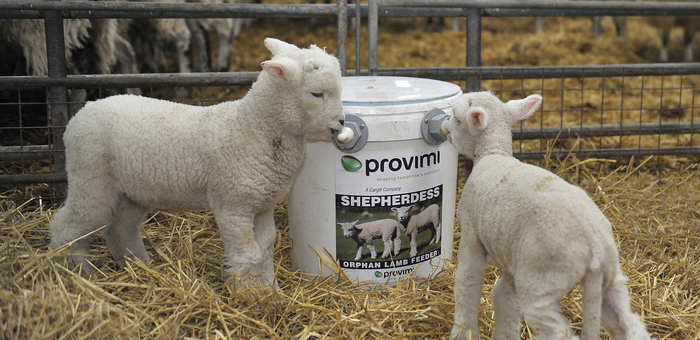As we reach the main lambing period, farmers are being reminded to have a system in place for rearing orphan and weaker lambs from multiple births where the ewe may be struggling.
“It’s been a relatively easy winter so far,” says Cargill ruminant nutritionist Georgina Croxford. “But we mustn’t be lured into a false sense of security. The challenges are still there when it comes to caring for newborn lambs and ewes.”
She encourages farmers to have a system set up – like the Shepherdessfeeder – to use for orphan or weaker lambs. “This feeder has an insulated bucket with internal pipes that won’t freeze on a cold night, and it provides lambs with ad lib warm milk – it’s heating element maintains milk at a desirable 22⁰to 32⁰C.
“It’s an ideal way of feeding up to 20 lambs in one group – they can go on to the feeder as soon as they can stand and suck.”
The whey-based milk ProviMilk Shepherdess or skim-based SCA Lambkin- both are easy to mix and contain NuStart gut conditioner – are specially designed to use in the feeder.
“Lambs reared this way are very content and maintain a tight cost – they do not become pot-bellied like those reared on bottles and very little, if any, growth check is seen at weaning. Its ‘easy-care’ rearing for orphan lambs – they perform as well as those reared on the ewe.”
Maximising lambing percentages and growth rates will pay off this year. The size of the ewe breeding flock fell in 2018 and the knock-on effect, in England, will be a significant fall in this season’s lamb crop.
“Industry analysts are predicting that this could aid prices, so maximising the potential of orphan lambs and having a strong healthy crop should pay off.”


